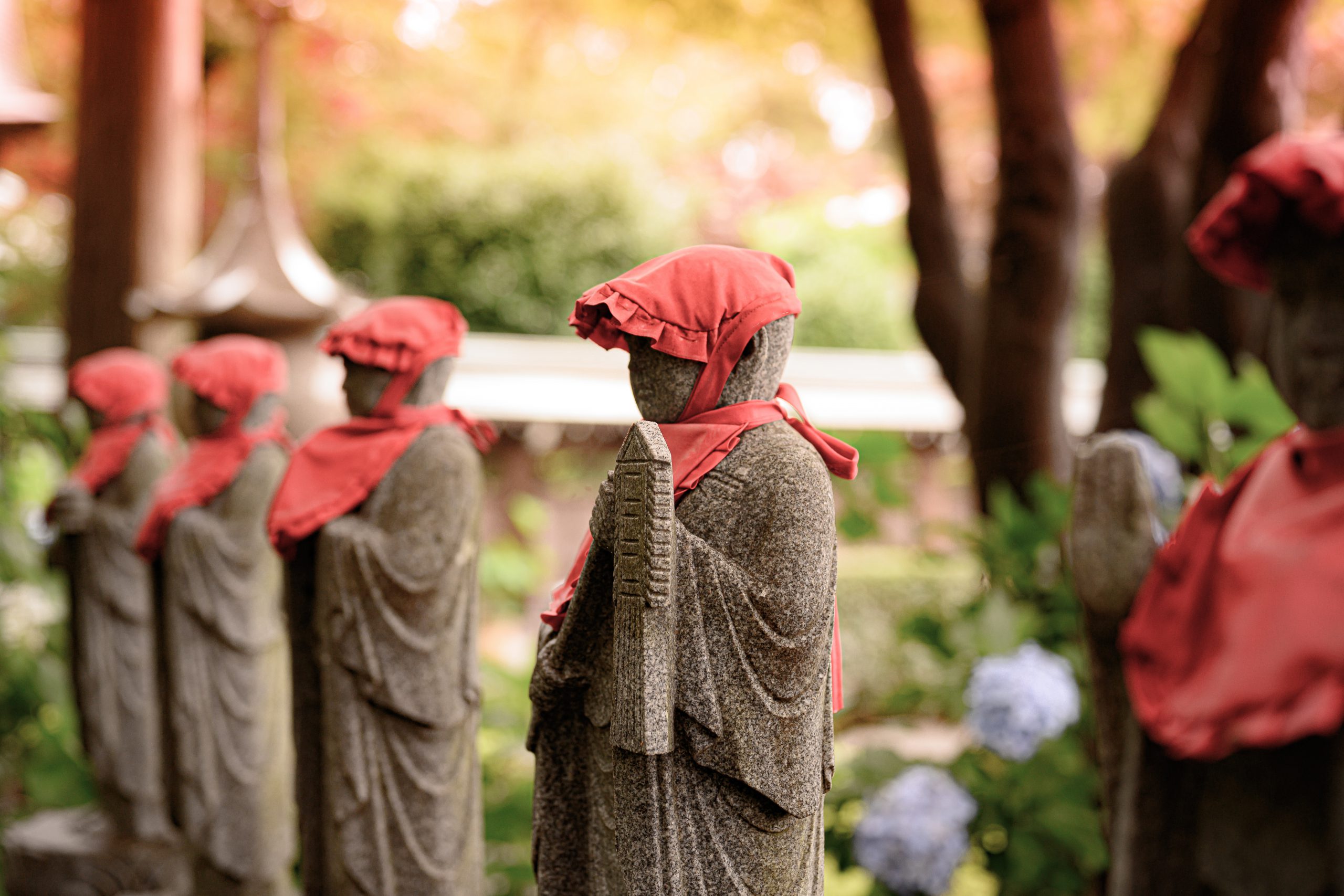
Mao Goto is a Japanese freelancer who was born in Hayama, Kanagawa prefecture, and raised in Tokyo. Since 2016 she lives in the Taito Ward, home to a lot of Japanese culture hotspots such as Asakusa, Akihabara, and Ueno. She has been interested in the field of English education in Japan and got her Master’s degree in March 2020. A lover of photography, travel, sweets, and cross-stitch. Contact her via Facebook.
This post may contain some affiliate links. When you click through and make a purchase we may receive some commission, at no extra cost to you.
In Western countries, the classic stories that parents commonly read to their children before bed include folktales such as Jack and The Beanstalk, Snow White, Little Red Riding Hood, Cinderella, and Goldilocks. These kinds of folktales are also well known in Japan and are familiar to many Japanese children. However, Japan also has its own set of unique folktales that parents read to their children and are beloved by all. Here are some of the popular folktales that you will find in Japan!
1. What are Japanese Folktales?
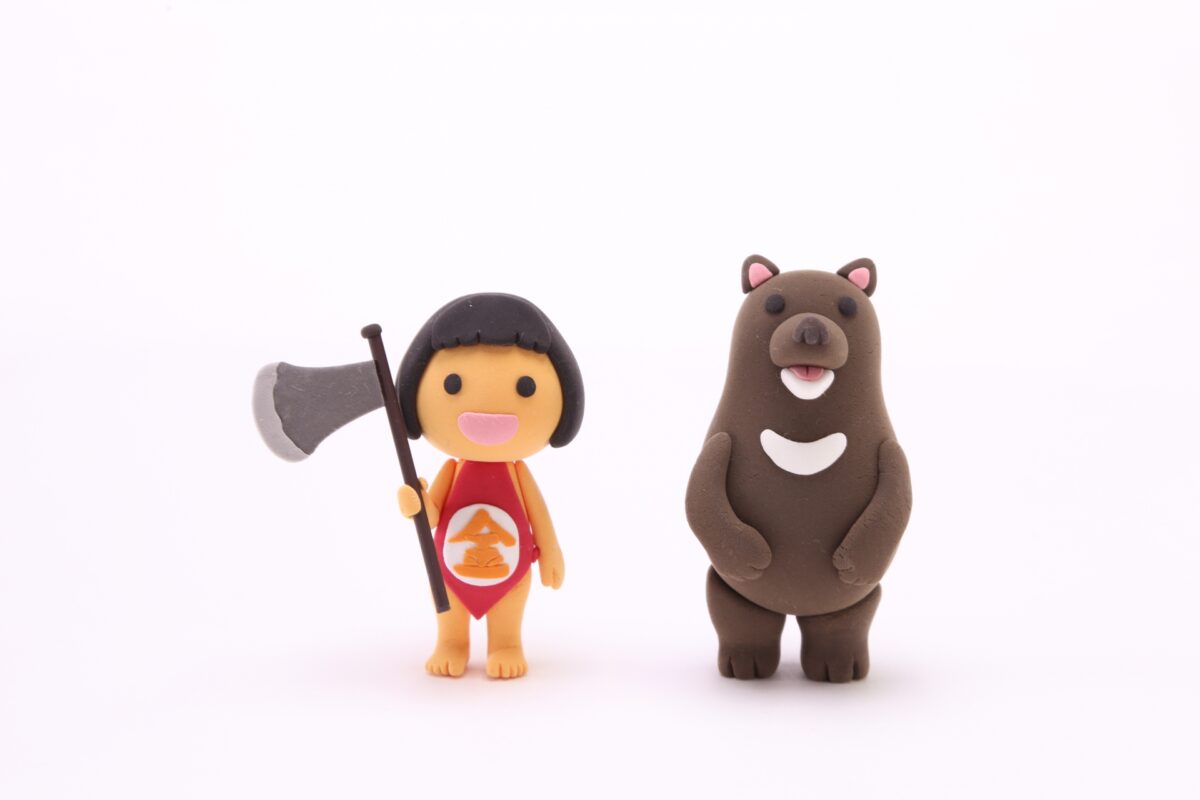
Japanese folktales are children’s stories that are often read in Japan and have long been passed down from generation to generation. Today, they are often read as picture books in Japanese libraries and sold at bookstores. They vary in content from educational and cautionary tales to funny stories and tragedies.
Incidentally, just as fairy tales in English usually begin with “Once upon a time, there lived…”, Japanese fairy tales also often begin with this sentence “昔々、あるところに…(Mukashi, mukashi, arutokoro ni…), which mirrors its English equivalent.
2. History of Japanese Folktales
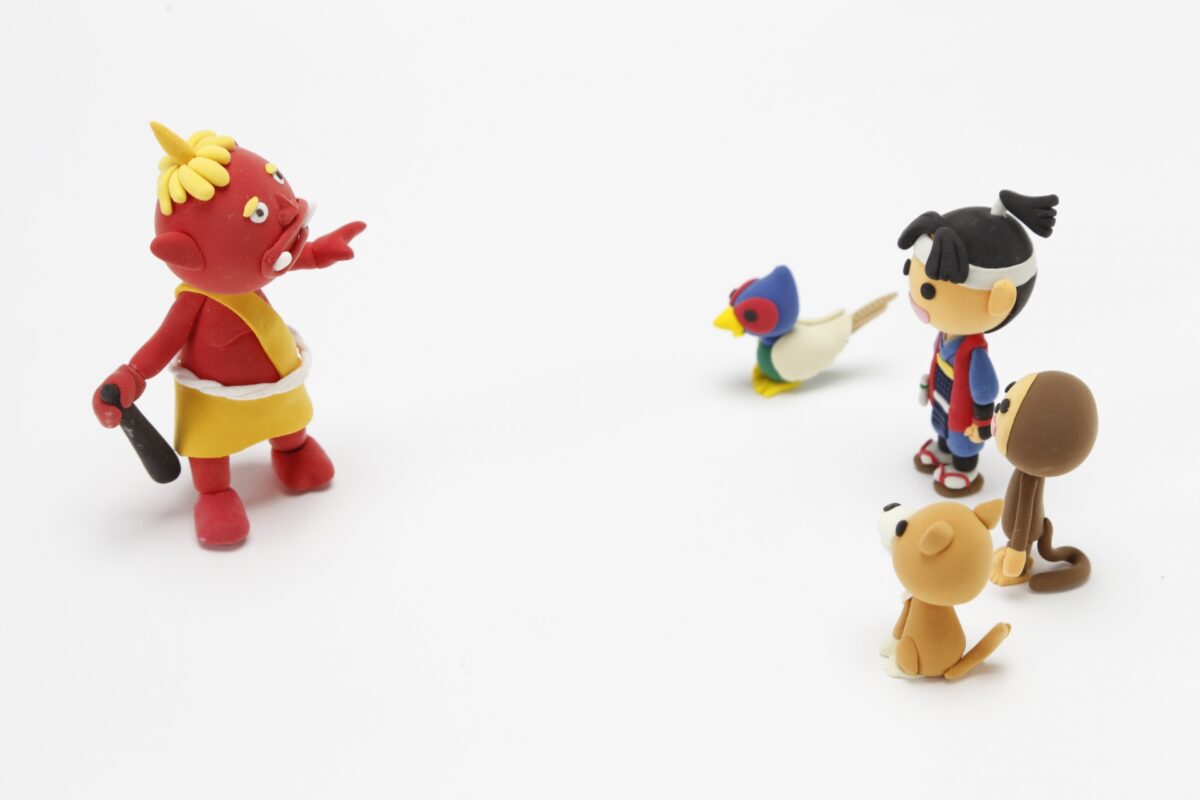
Since the origins of Japanese folktales have been passed down orally through the generations until the present, it is not known exactly when and where they originated. The narrative literature that flourished among the upper classes during the Heian period gradually declined with the fall of the aristocracy in the Kamakura period, and what emerged instead at the end of the Kamakura period were short, illustrated stories called “御伽草子(otogi-zoshi).”
Unlike the upper-crust literature of the Heian period, which often had long-form themes of love between nobles, many of the stories were in short form and plainly conveyed incidents and events. As a result, there were more variations in the stories, such as the main character being a nameless commoner or an anthropomorphic animal. It is said that these stories are what eventually became the Japanese folktales of today.
3. Popular Japanese Folktales
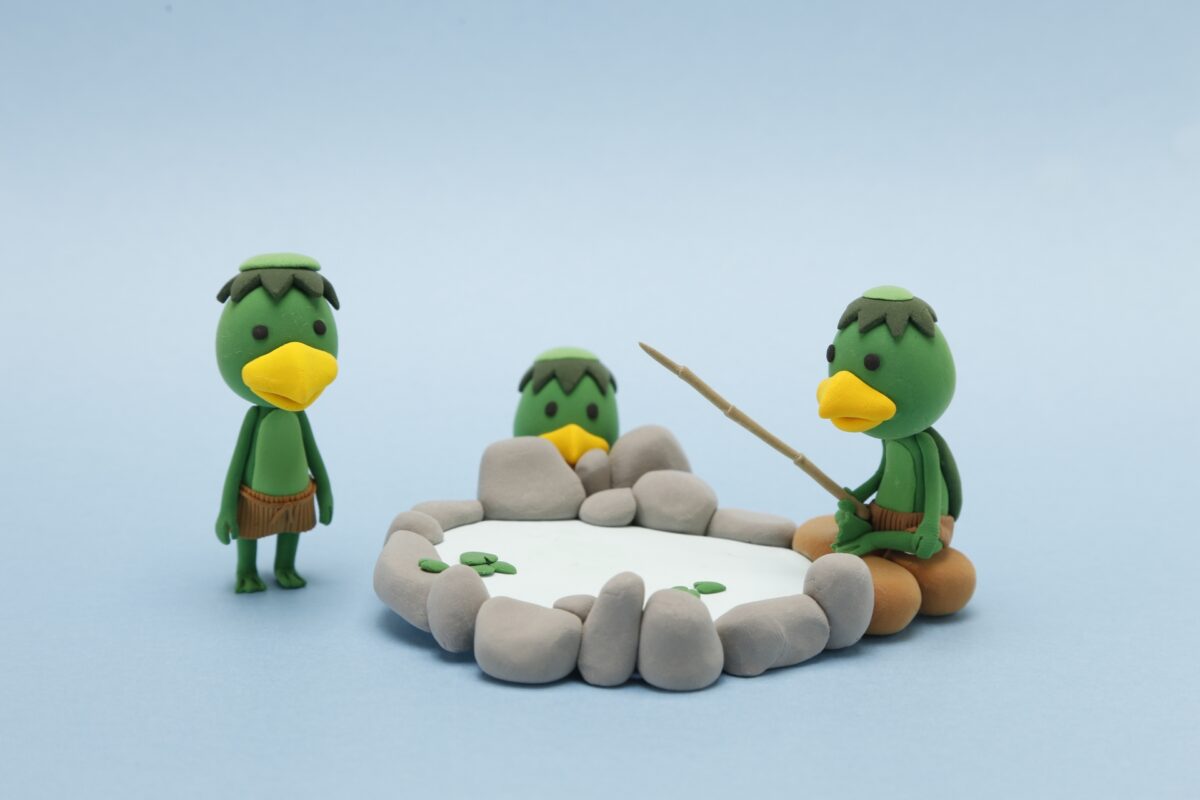
Japanese folktales are rich in theme and very diverse in nature. Let’s take a look at four of the most popular Japanese folktales that nearly every Japanese child has heard growing up at some point in their lives.
Momotaro
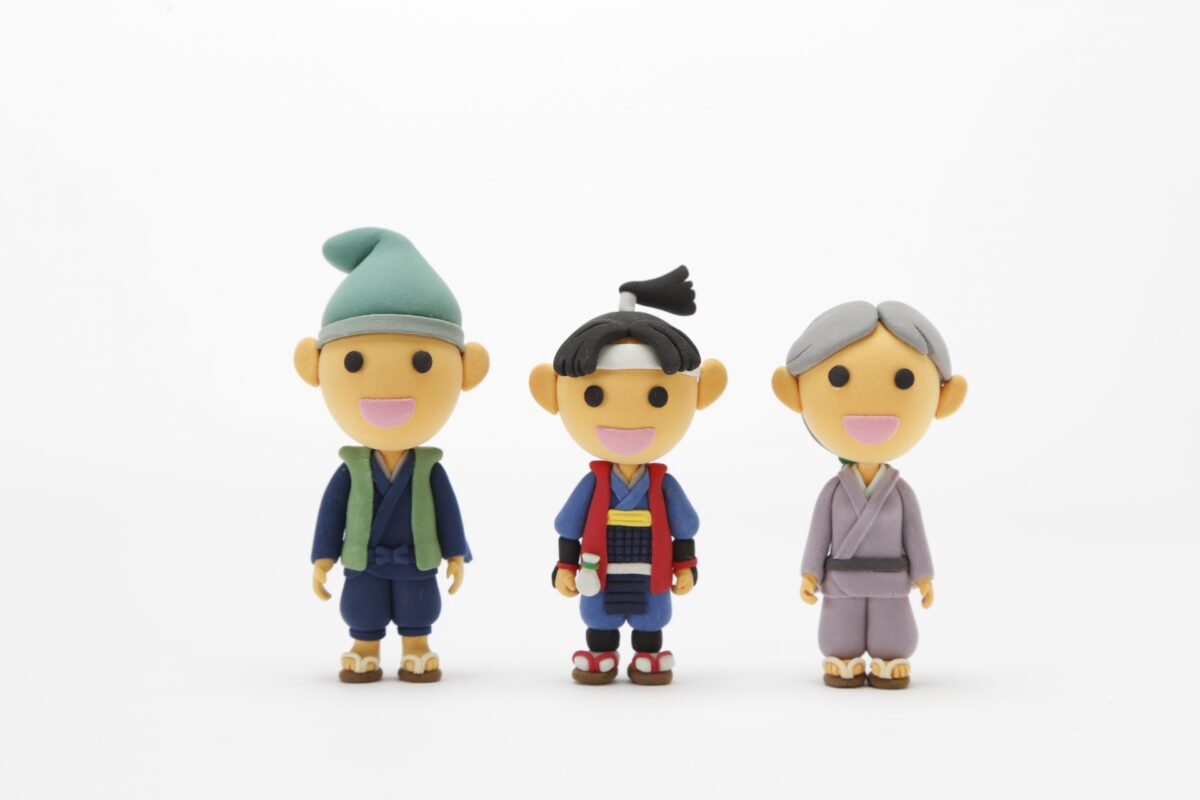
Once upon a time there lived an old man and an old woman. One day the old man went up into the mountains to cut grass while the old woman went down by the river to wash clothes. While she was going about washing clothes, a big object came floating down the river. She pulled it out of the river and discovered that it was a very large peach. She brought the peach home with her planning to eat it with the old man.
When she started to cut the peach in two, out popped a baby boy. The old couple was thrilled and named the child Momotaro, or peach boy. The couple took good care of him, raised him as their own son, and he grew up to be a big strong young man.
Now that he had grown up, he told his parents that he wanted to do something to help his country and decided to go to Onigashima(Demon Island), where many wicked demons lived who would often come to the mainland and do bad things. His parents were proud of his decision and they sent him off with a sword and armor, and some dumplings for his journey.
Momotaro met a dog on his way to Onigashima, who didn’t seem very fond of him at first. But after he gave him one of his dumplings and told him where he was headed, the dog was happy to join him. The two of them continued their journey and ran into a monkey, as well as a pheasant who both agreed to join them on their trek, and he gave them both a dumpling as a thank you.
They all walked for a long ways and finally reached the sea. They built a boat to get across the sea to Onigashima where the demons awaited them. They approached the island and it was filled with very scary and strong looking demons.
The pheasant flew off the boat first and started to peck at the demons from above. While the pheasant was distracting the demons, the monkey snuck onto the island and opened the gate of their fort. The dog and Momotaro ran into the fort and joined the battle themselves.
It was a brutal battle between the two sides, but Momotaro and his three companions proved to be superior and won in the end. The demons all bowed before Momotaro and promised never to do anything wicked again. They then gave all of their treasure to them to take home back to the mainland.
Momotaro and his three companions brought the treasure home with them on a cart. The whole mainland made a hero of him upon his triumphant return and were overjoyed that everyone would now be safe from the demons. The old man and woman were particularly delighted and they all lived happily ever after.
Urashima Tarō
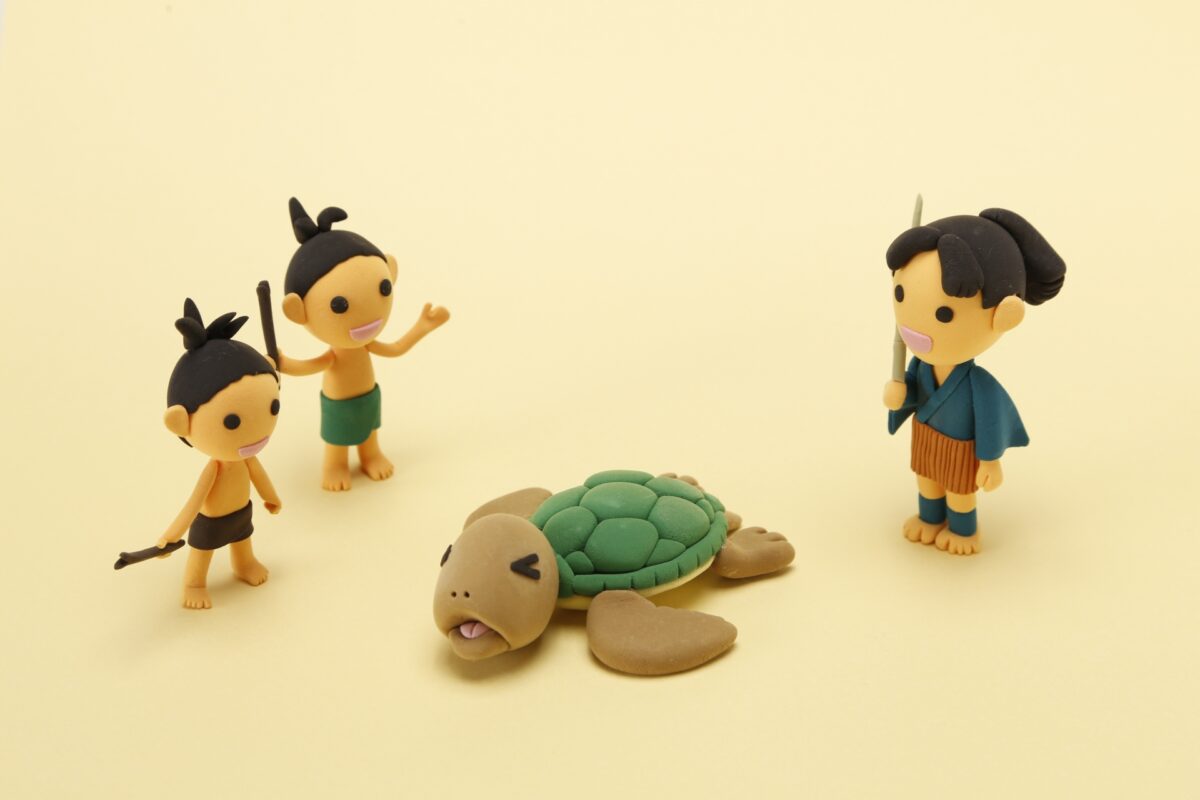
Once upon a time, there was a kind-hearted fisherman named Urashima Tarō. One day while walking along the beach, he saw a turtle being teased by children. Taking pity on the turtle, Urashima Tarō made the children stop bullying the turtle and saved it.
A few days later, while Urashima Tarō was out fishing on his boat, as usual, the turtle suddenly came out of the sea. The turtle said, “Mr. Urashima, I am the turtle you saved on the beach a few days ago. To thank you for your kindness, I will take you to “Ryūgūjyō” (The Palace of Dragon) at the bottom of the sea”.
Urashima Tarō accepted the offer and was taken to the Ryūgūjyō, where he received a warm welcome. After spending a pleasant time there, Urashima Tarō decided to return home, but the inhabitants of Ryūgūjyō gave him “a box that must never be opened” as a gift.
When Urashima Tarō returned to his hometown, he found that his house was gone and nothing or no one he saw looked even vaguely familiar. He asked a passing resident if he knew what had happened, and found that many centuries had passed since he went to Ryūgūjyō. Disappointed, Urashima Tarō opened the box that he was not supposed to open and became a gray-haired old man at last.
Hachikazuki-hime (The Princess Who Had a Bowl on Her Head)
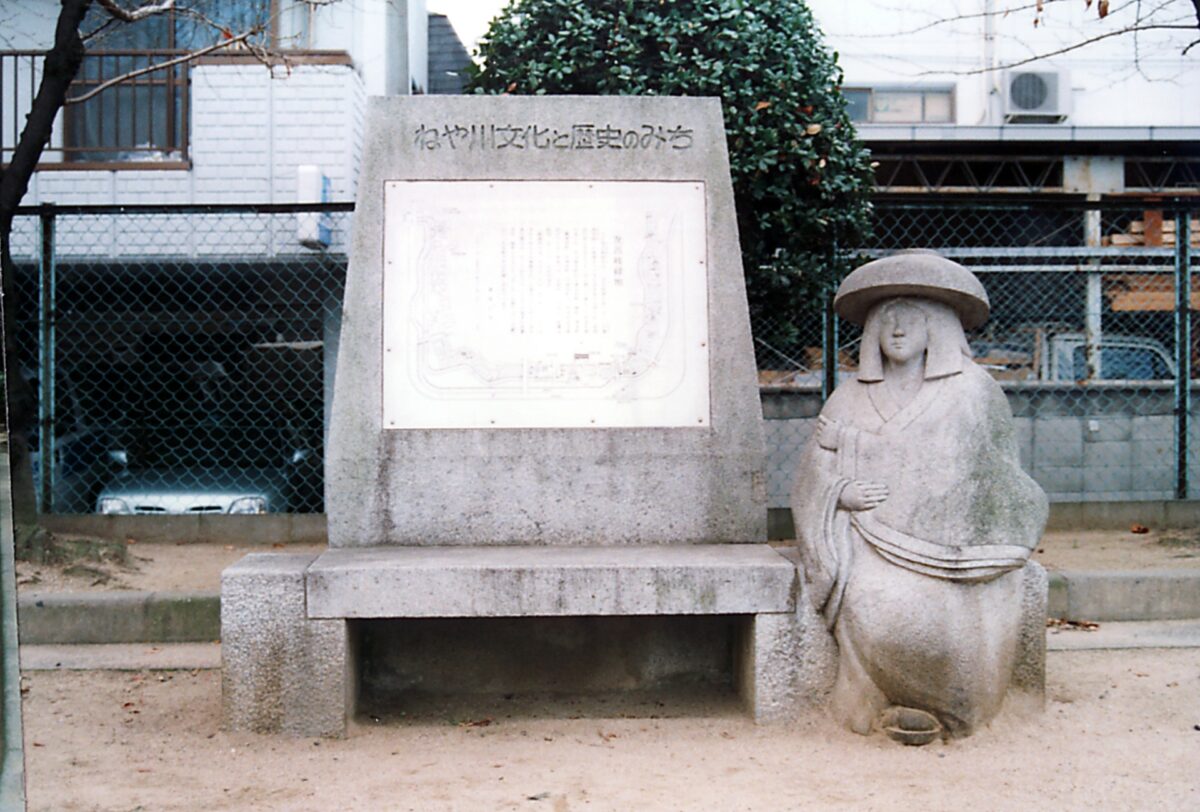
Once upon a time, there was a very beautiful princess. Her mother, who had been ill for a long time, prayed to Kannon, the Goddess of Mercy, in a dream, worrying about her daughter’s future.
In her dream, Kannon told her, “Put a bowl on your daughter’s head”. The princess’ mother did as Kannon told her and put the bowl on her daughter’s head, and within a few days, the mother passed away. Her father thought the daughter looked out of place and not elegant as a princess should be with the bowl on her head and so he tried to remove the bowl, but it could not be removed.
After a while, her father remarried, and her new mother was so horrified by the sight of the daughter wearing the bowl that she ordered her retainers to throw the daughter away somewhere far away.
The girl, upon hearing the news, was so sad that she ventured off into a forest and wandered until she found a big river. She said to herself, “If I throw myself into this river, I can see my deceased mother again”.
With this devastating feeling, she threw herself into the river. However, for some reason, she could not get into the water above her neck, which was covered with a bowl. Therefore the princess had no choice but to go ashore.
Before she knew it, she was rescued by a young samurai passing nearby, and he allowed her to stay in his home. One night, the princess found a Koto (Japanese harp) in the storehouse and played a tune in nostalgia for the old days. When the young samurai heard the beautiful sound and asked her what kind of person she was, she told him about her past.
Later, when the young samurai was told by his parents to get married, he insisted that his wife be none other than the princess who was wearing a bowl! This angered his parents violently and just as the father was about to swing his sword to kill the princess, suddenly the bowl she was wearing broke into pieces, revealing an unbelievably beautiful princess draped in gold, silver, and treasures. In the end, the princess and the young samurai got married and lived happily ever after.
Hanasaka Jiisan (The Man Who Made Flowers Bloom)
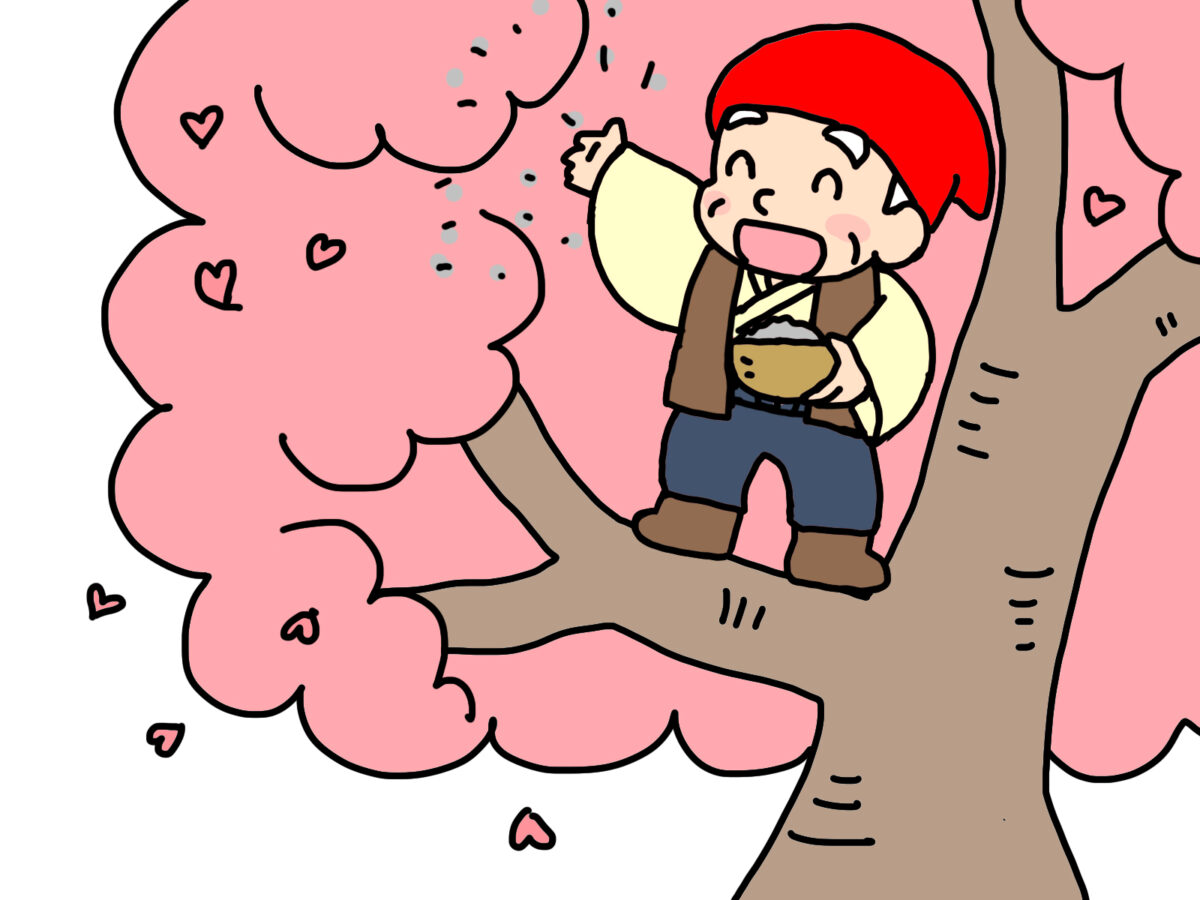
Once upon a time, there lived a grandfather and a grandmother. They had no children, but they did have a dog named “Shiro” that they loved very much. One day, Shiro was in the field and said, “Dig here, bow-wow!”, “Dig here, bow-wow!”.
When the grandfather dug into the soil as Shiro said, he found a lot of gold and silver there. He was so surprised and delighted that he took the treasure home. The mean old man next door heard about this and forced Shiro to go out and show him where he should dig in the field. When the mean old man dug up the soil where Shiro had barked, he only found junk and rotten garbage. This made the mean old man very angry and he said, “You useless dog!” and beat Shiro to death.
“Oh, poor Shiro!” The grandfather and grandmother were saddened by the sudden murder of Shiro. They buried him in the ground and made a grave with a stick to mourn him.
The next day, when they went to Shiro’s grave to pray, they found that the stick they had put in Shiro’s grave had turned into a big tree. The grandfather and grandmother used this large tree to make a wooden rice mortar and pound rice cakes. Then, strangely enough, treasure started to come out of the rice cakes.
When the mean old man heard this story, he borrowed the wooden rice mortar and pounded rice cakes, but instead of treasures, only pebbles came out. This made the mean old man so angry that he smashed the wooden rice mortar to pieces and burned it to ashes.
The grandfather, whose precious wooden rice mortar had been burned, tried to then take the ashes home in a wooden bowl, hoping to at least have the ashes to remember his beloved Shiro. While he was walking through the withered forest in sorrow, a strong wind suddenly blew from somewhere and the burnt ashes were scattered on the withered trees nearby.
Then cherry blossoms burst into full bloom. The grandfather was so happy that he sprinkled the ashes on the withered trees and made more and more cherry blossom trees bloom wherever he went.
By chance, a great and noble lord happened to pass by the beautiful cherry trees and gave the grandfather a lot of treasures as a reward for showing him the beautiful cherry blossoms. The mean old man, hearing about this, forced the grandfather to take away the ashes and sprinkled them all over the withered trees in order to make them bloom so that he too could receive a reward from the lord like the grandfather.
However, the flowers did not bloom and, on the contrary, ashes got into the lord’s eyes. The angry lord had his retainers catch the mean old man and punish him afterward.
In this article we mentioned what Japanese folktales are and some examples of them. Of course, there are many more Japanese folktales beyond those introduced here, some of which are educational for children and some that are even inspiring for adults.
If you are a at the beginning stage of learning Japanese, these stories with pictures are at about an elementary-level and are really helpful for practicing Japanese.
Japan Wonder Travel Tours
Japan Wonder Travel is a travel agency that offers guided tours throughout Japan.
From private walking tours to delicious Food and Drink tours, we can help you organize the best tours just for you! If you want to explore Japan and learn more about the history and backstories of each area you are visiting, our knowledgeable and friendly English speaking guides will happily take you to the best spots!
In addition, we can provide you with any assistance you may need for your upcoming trip to Japan, so please feel free to contact us if yu have any questions or need some help!
▶Tokyo Tsukiji Fish Market Food and Drink Tour
Explore the most lively and popular fish market in Tokyo and try some of the local’s favorite street foods and sake with one of our friendly and knowledgeable English speaking guides!

▶Tokyo 1–Day Highlights Private Walking Tour (8 Hours)
There’s no better way to explore an area than taking a tour with a knowledgeable local guide. You will have the chance to learn about the history and interesting background stories of Tokyo, as well as discover some hidden gems which can be hard to do without a guide.

▶Mt. Fuji Day Trip Bus Tour from Tokyo
Experience the breathtaking views of Mt. Fuji by visiting the highlights of the area on our guided sightseeing bus tour! Departing from Shinjuku in central Tokyo, you can travel comfortably to all of the best spots in the area by bus.

Follow us on Instagram, Facebook, and Twitter for more travel inspiration. Or tag us to get featured!
Happy traveling!




